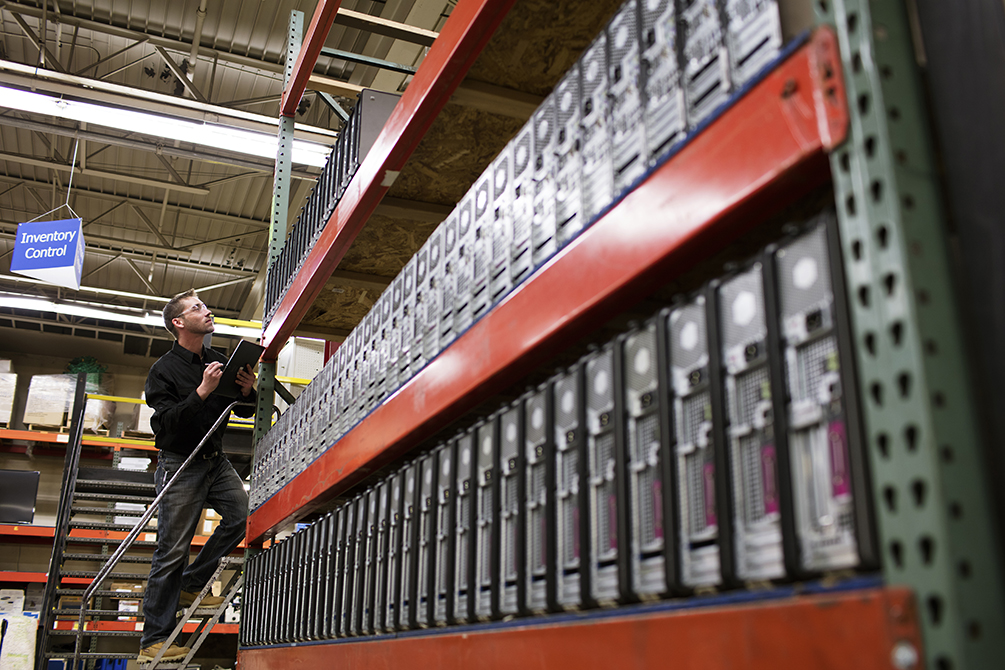
EWASTE+ Your Leader in ITAD and Data Center Decommissioning Best Practices.
As a leader in IT asset disposition across the northeast, EWASTE+ is dedicated to guiding businesses through secure data center decommissioning. We recognize that compliance and security is essential, even when decommissioning a data center.
In today’s modern world, data is stored on an incredible scale on end-user devices as well as centralized servers. How you handle that data at any part of its lifecycle is an essential part of data center management.
When it’s time to decommission your data center, however, it can leave you with questions. As a NAID certified company specializing in disposal and sanitization of data, EWASTE+ can guide you through the process.
Why Choose EWASTE+?
Logistics To Meet Your Needs
Customize your decommissioning schedule with EWASTE+, allowing the recycling of decommissioned parts at your pace. We’ll work with you to ensure each load of recyclables is sanitized to meet industry compliance standards, providing assurance every step of the way.
Top Industry Certifications
EWASTE+ is proud to be trusted across the northeast with data destruction technology. As New York State licensed, R2v3 and RIOS™ certified data destruction specialists, we are proud to maintain NAID certification.
Flexible Recycling Programs
Customize your IT disposition program to meet the needs of your data center decommissioning schedule. Whether you are on a tight deadline, or looking to decommission over the next year, we can provide the recycling support necessary to help you stay compliant on-schedule.
Dedicated Account Manager
Streamlined support and succinct conversations with a dedicated account manager to simplify the process. All the flexibility of an on-demand recycling program, with the streamlined benefits of a single point of contact.
The Importance of IT Asset Inventory Procedures
In any data center decommissioning work, it’s important to inventory IT assets to remain compliant and ensure the security of data stored in defunct servers. With how much data can be stored on a modern device, it’s critical to keep track of everything at a glance. Without an inventory, it’s impossible to know if all data was effectively destroyed during the decommissioning process, or if there is potential for a data breach in the future.
The primary benefit of an IT asset inventory ensures that everything is accounted for when it goes through the data destruction process. Not only will EWASTE+ inventory everything that is destroyed, providing you with an inventory reference for comparison, but we’ll help you track the destruction of those assets the whole way. Inventorying is an essential part of the process for keeping your company compliant with international data regulations and customer reputation alike.
Consistency and Reliability
When IT assets are inventoried properly before decommissioning, you can ensure that all hardware and software are tracked ahead of sanitization. Not only does this provide you with a control providing you with a reliable count of all destroyed items, but it keeps your business compliant with destruction regulations and auditing that ensures the privacy of previously stored data.
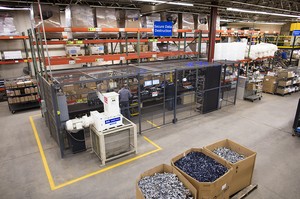
Compliance with Data Destruction Regulations
Inventorying IT assets during data center decommissioning keeps your business in compliance with data destruction regulations including GDPR. This includes how your data is collected, disseminated, stored, and sanitized. Inventorying that data ahead of time can help keep you compliant even as data is stored.
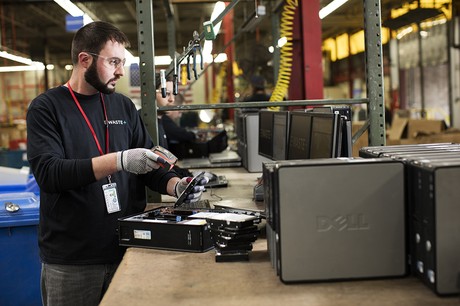
Secure Inventory Tracking
When IT assets are inventoried, the risk of a data breach after decommissioning the data center is minimized. With secure inventory tracking, you can rely on your IT assets to remain tidy, tracked and organized. This type of inventorying maximizes your security throughout the storage and decommissioning process.
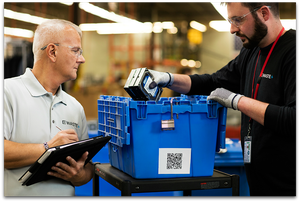
Common Questions: What Is Data Center Decommissioning?
Data center decommissioning is a strategic retiring or repurposing data within a facility which includes data center infrastructure, equipment and hardware such as servers or hard drives. Proper decommissioning can help you safeguard sensitive data while complying with regulations.
Data Center Decommissioning: Step-by-Step Process
With any data center decommissioning process, there are guidelines to help you keep data secure and properly tracked while retaining compliance through security protocols.
With a systematic process that involves planning, data protection and environmental responsibility, businesses agree that it is essential to follow these steps diligently to ensure proper safeguarding of sensitive information while retaining their environmental promises. It’s essential to follow these steps diligently, retaining a clear line of sight throughout the entire project.
Once decommissioning has been completed, EWASTE+ can step in to handle the asset recycling or disposition process, freeing up your business’ time and resources.
Step 1: The Planning Phase
Before commencing with a data center decommissioning plan, it is critical to ensure you’ve outlined the steps and timeline for the project and identified all key stakeholders involved. Whether the entire data center is being decommissioned, or just a portion of it, it’s crucial to double or triple-check the information during the planning phase.
Once key stakeholders are identified and a project manager has been appointed to take on the project, it’s important to develop a realistic budget and schedule. Within the schedule, outline the scope of work and choose a network discovery tool to ensure the success of the project. At this stage, you can begin making contact with an asset destruction company like EWASTE+, based out of New York State.

Step 2: The Decommissioning Phase
Once the planning phase is complete and has been reviewed by all stakeholders, the decommissioning stage can begin according to the timeline set out.
Typically, the process starts with a comprehensive backup of all IT assets and software, providing an opportunity to begin inventorying. Run any tests on the backups before disconnecting assets from the network. It is also important to verify any hardware documentation on-site as well.

Step 3: IT Asset Recycling
After decommissioning, IT asset disposition is a critical factor in keeping data secure through sanitization. Ensure all IT departments have finalized tracking and reporting for assets that must be disposed of and pack the assets onto pallets for pickup. Contact EWASTE+ to schedule a pick-up and let our asset destruction specialists handle the rest.
Once the recycling is done, we’ll provide you with data destruction certificates and videos to ensure you remain in compliance with data security regulations.
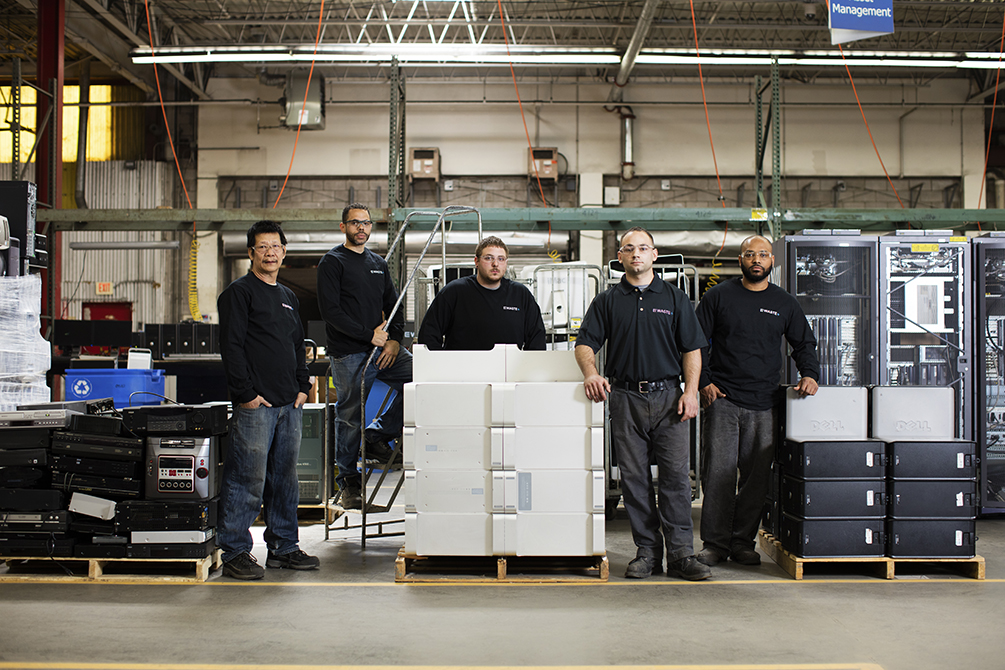
A Checklist for Data Center Decommissioning
Decommissioning any data center requires a systematic approach to ensure data remains secure throughout the process. In addition to the generalized guidelines, businesses often follow a 7-step checklist to help them ensure all steps have been completed and the data center is completed in a timely and responsible manner.
Unfortunately, consumer tools cannot guarantee 100% data erasure. Furthermore, research has shown that up to a fifth of all global enterprises do not know how to dispose of hard drives. These companies do not differentiate the disposal needs between hard drives and solid-state drives. Complete, 100% erasure for the specific hard drive type is vital to ensuring complete data destruction.
At EWASTE+, we carefully dispose of your old IT assets according to their individual needs, inventorying every item before sanitization to ensure everything is accounted for and destroyed according to NAID certification standards.
Setup
The first step to decommissioning a data center is to establish the scope of work, goals, and outcomes of the project. The project manager appointed to the project should be able to handle this aspect of the project quickly, enabling the inventorying and planning phase to proceed without delay. It’s also important that the timeline showcases realistic milestones; data center decommissioning can take longer than most businesses anticipate to fully inventory, decommission, and destroy data.

Inventorying
Not only should all assets be inventoried early in the project, but all IT departments and individuals affected by the project should be notified. Ensure communication with these stakeholders is airtight as the physical data inventorying begins. Network discovery tools and a physical review should both be done to ensure inventorying is complete, ensuring no assets are left behind. This is also the stage to connect with EWASTE+ and determine how final assets will be handled, whether through complete sanitization or through recycling.

Planning
Take stock of all the roles, tasks, and responsibilities that individuals involved in the project must perform during the decommissioning process. Planning and ensuring these responsibilities are completed on time will ensure the project unfolds with the correct timeline.

Resources
At this stage, tools may be necessary for decommissioning the data center, such as material handling equipment for loading items onto pallets. During this stage, it’s important to stay in touch with EWASTE+ and ensure that resources are being allocated in a way that assures the most streamlined decommissioning process.

Disposition
After loading assets onto pallets and scheduling a pick-up with EWASTE+, your assets will undergo disposition, whether it is sanitization, shredding, or another form of disposal. Interim check-ups may be necessary, as additional pick-ups may be made for larger decommissioning projects. The actual sanitization and disposition certificates will be handled by our professional data destruction specialists.

Cleanup
In many cases, cleanup is a part of the disposition process, making way for new materials or for moving out of the physical space. This should be factored into the original timeline as well with a long lead time, as cleanup often takes longer than anticipated. If re-using the space, a plan may be put into place for how the space will be re-used after the data center has been decommissioned.
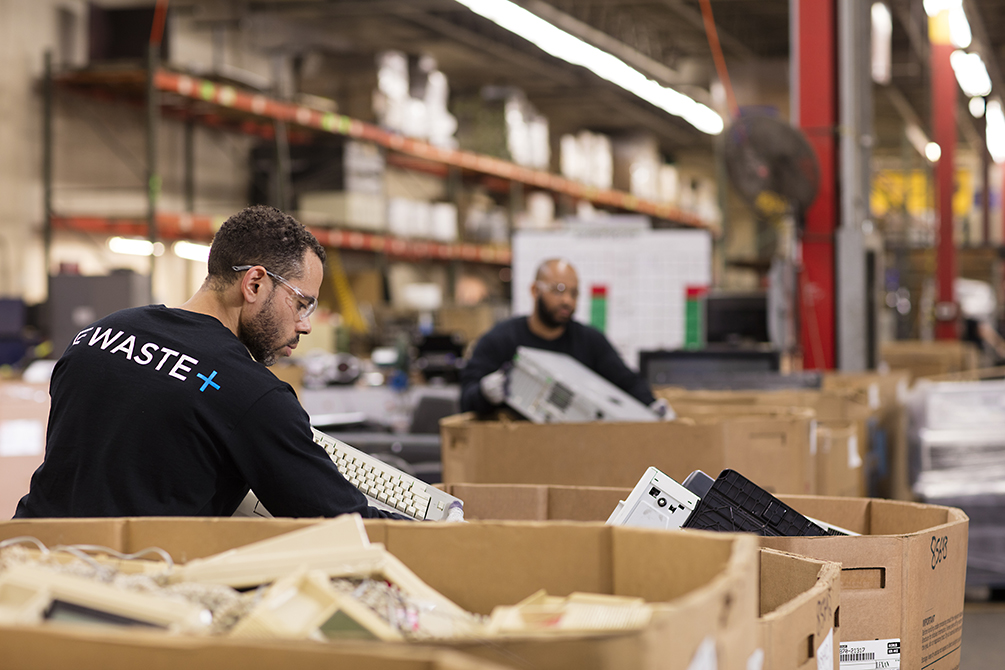
NAID-Certified Data Center Decommissioning Specialists
In the northeast, data destruction and disposition require a lot of precautions. Don’t leave anything up to chance; choose EWASTE+ for your data center decommissioning needs. Our NAID-certified specialists are equipped to help you dispose of any IT asset or storage mediums after a data center decommissioning project.
NAID certification is essential for maintaining the confidentiality of your data, ensuring all drivers involved with your project are uniformed and maintain secure, locked trucks. We check every specialist with criminal background checks and drug testing prior to extensive training to ensure your data is handled responsibly. Additionally, we retain 90 days of video backlog surveillance at all our destruction centers. Data Center Decommissioning: On-Site, or At Our Destruction PlantData Center Decommissioning: On-Site, or At Our Destruction Plant

Reporting
Reporting is an essential part of any data security work. EWASTE+ will provide you with destruction videos and certificates to ensure your business remains compliant with all data security requirements. In addition to regulatory updates, the project manager should update all stakeholders to inform them of the project’s completeness.
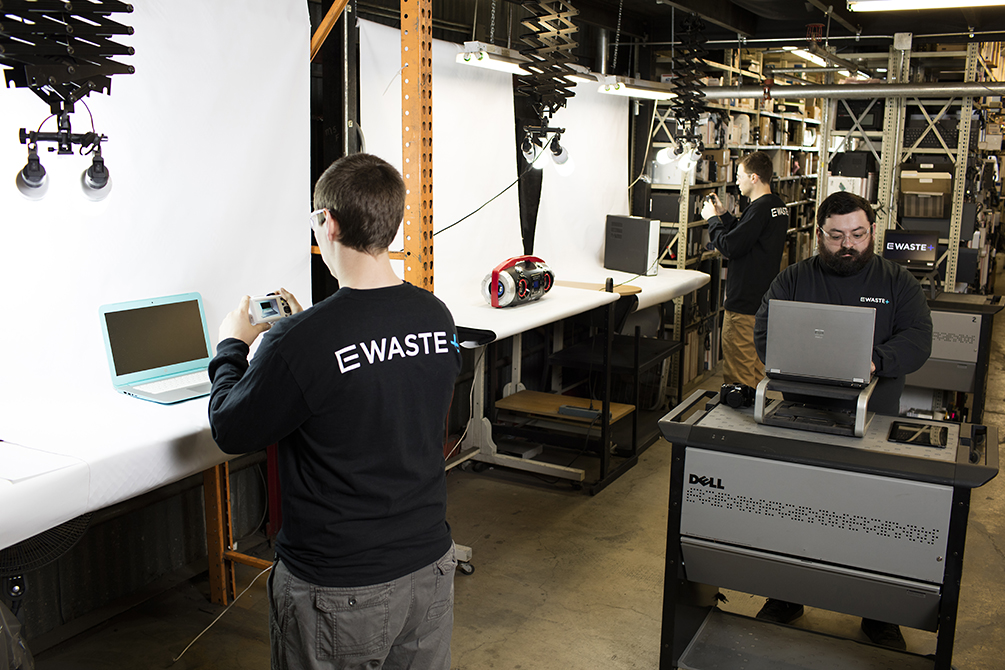
Data Center Decommissioning: On-Site, or At Our Destruction Plant
At EWASTE+, we prioritize your schedule and help you get a head start on data center decommissioning by offering two convenient options. Prefer on-site decommissioning services where we sanitize the inventoried assets into our purpose-built mobile shredders? We can make it happen. If you would rather destruction occurs off-site, we pick up assets and deliver the equipment to our secured facility where certified technicians complete the destruction process.
Choose from a range of services and customize it to suit your company’s needs for maximum security and convenience. EWASTE+ is the northeast’s most trusted electronic recycling and data destruction service. NAID certified and based in New York State, we strive to meet your demands.
On-Site Asset Destruction
On-site asset destruction is the easiest way to receive immediate validation that confidential data has been securely destroyed. Our technicians are available to provide these data destruction services at your office location if needed. Each convenient mobile destruction unit is equipped with high-security protocols and each uniformed driver is certified for data handling and destruction services.
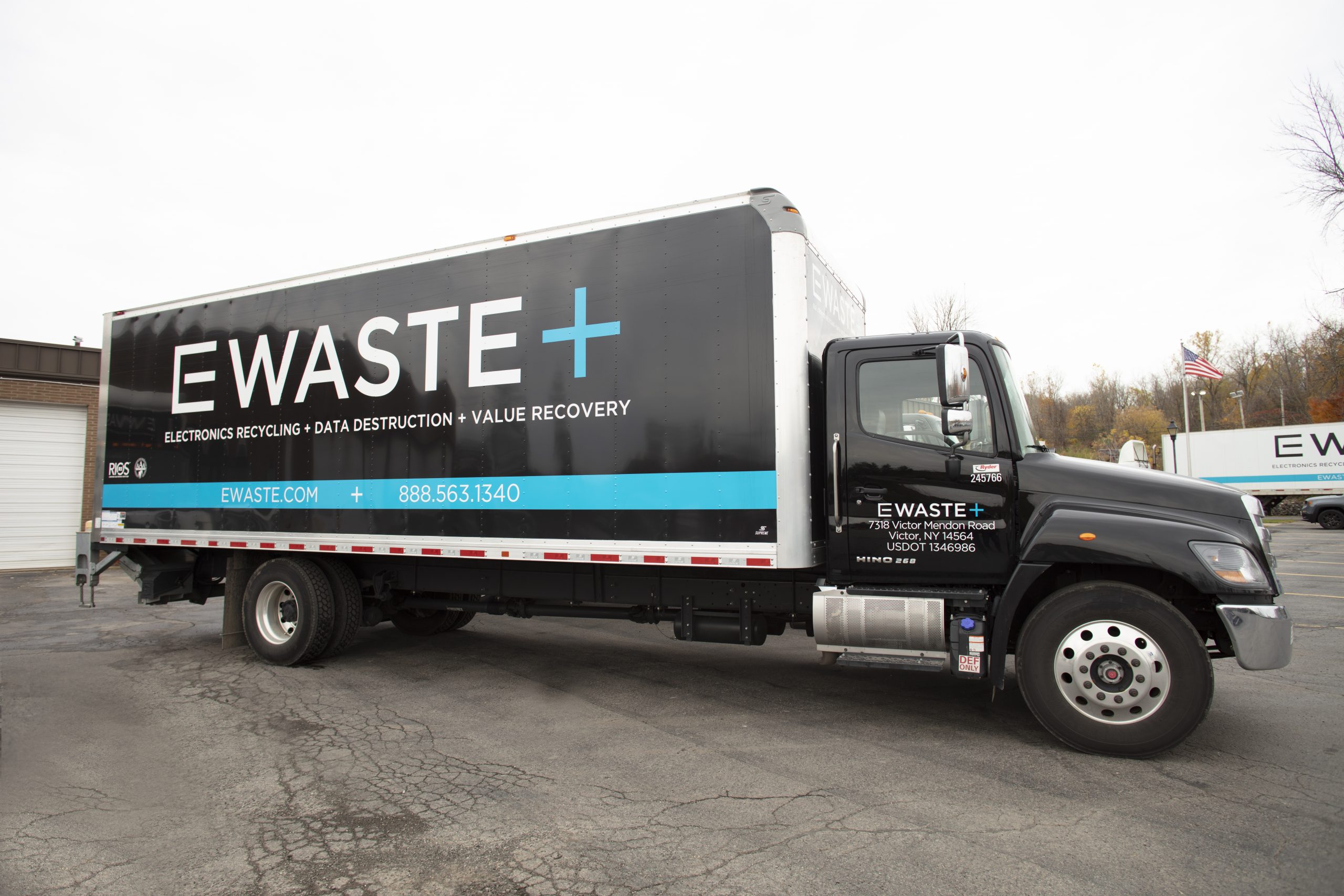
Asset Pick-Up Logistics
Don’t want on-site services? No problem. We can pick up your decommissioned assets for destruction and deliver them to our certified facility, helping you figure out a solution that meets your individual needs.
Our fleet of box trucks and tractor trailers are equipped with state-of-the-art security such as two-way mobile communication devices and GPS tracking on all vehicles to ensure your data is monitored the entire drive. We can pick up any size load from a single pallet to a full tractor-trailer worth of inventory at once.
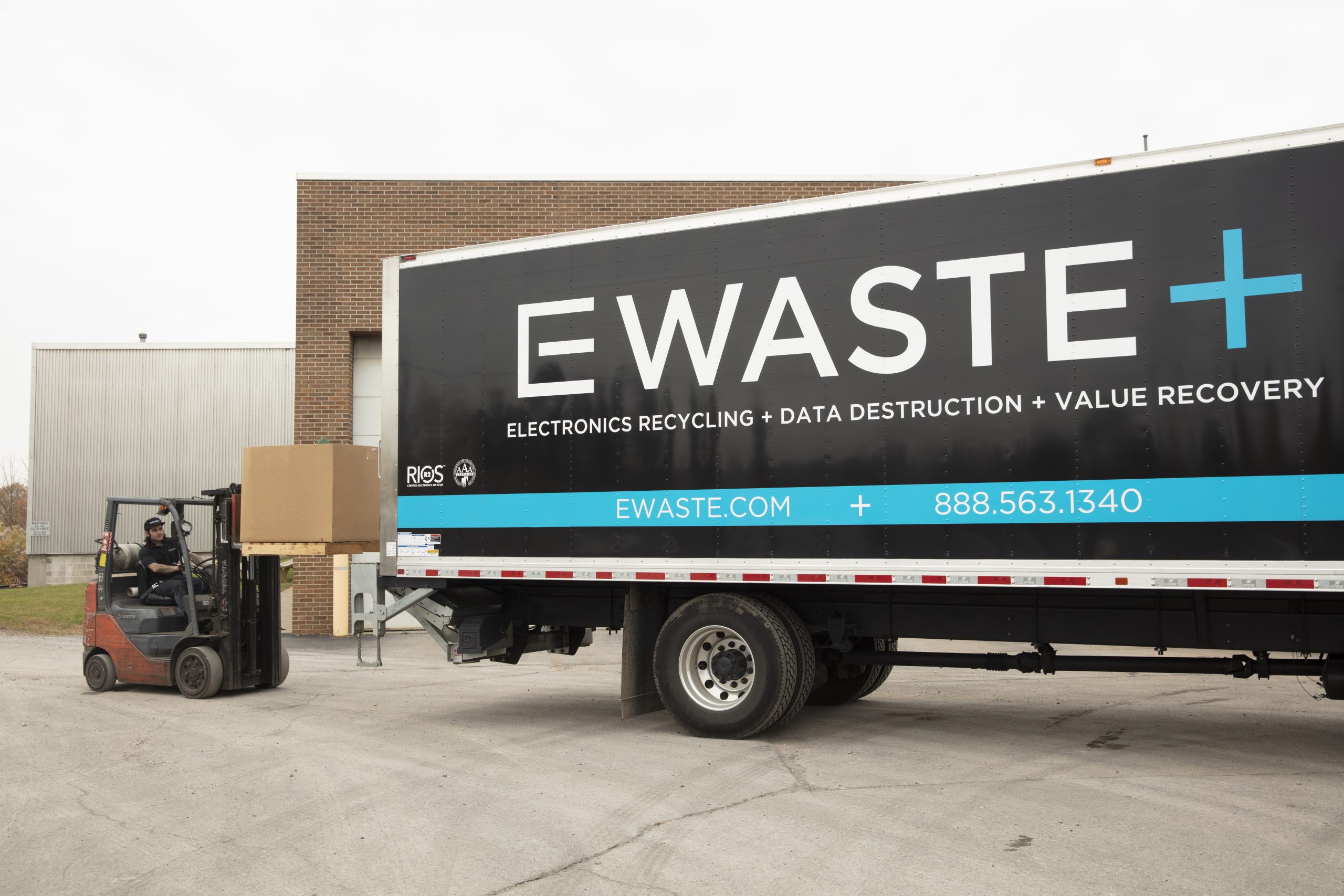
Contact EWASTE+
Before decommissioning your data center, it’s essential to get in touch with a certified ITAD company to determine which program makes the most sense for your project. We are here to help the decommissioning process go smoothly, future-proofing your company’s data security and ensuring maximum compliance throughout the process.
Get in touch today. Our team of data destruction specialists are here to answer questions and schedule a pick-up at your earliest convenience.


